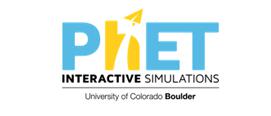Electricity
Electricity can seem like an abstract concept to students that it is difficult to picture and they find it tricky to describe what is happening inside a circuit or device. It needs to approached with clarification of key definitions (even when these have been covered before, such as current) and with a critical eye on any models used during teaching. Some students also find it difficult to relate practical work observations to models used and calculations undertaken so this process should be included in lesson and guided by the teacher.
Whilst this list provides a source of information and ideas for experimental work, it is important to note that recommendations can date very quickly. Do NOT follow suggestions which conflict with current advice from CLEAPSS, SSERC or recent safety guides. eLibrary users are responsible for ensuring that any activity, including practical work, which they carry out is consistent with current regulations related to Health and Safety and that they carry an appropriate risk assessment. Further information is provided in our Health and Safety guidance.
Episode 102: Current as a Flow of Charge
A resource that suggests demonstrations to teach the relationship between current and charge, with notes to help with teaching ideas that would be especially helpful to an non-specialist. There are also worked examples and student questions (with answers) that can be used to develop the idea mathematically. The activities are aimed at post-GCSE students so have a level of challenge in later activities.
Ohm's Law
A simulation that can be used to develop the idea of Ohm's law. This is a simple and very visual way to change a variable and then look at the resulting effect on the other variables in the equation, especially for students who may have struggled previously. It could be used to introduce the idea, or to reinforce practical work after students have finished their investigations.
Episode 123: Alternating Current
Produced by the Institute of Physics, this collection of demonstrations, practical work and teacher notes helps students to distinguish alternating from direct currents before looking at why alternating current (ac) is so important. Student questions and answers are also included, although some of the more difficult questions are beyond the scope of this qualification.
One Hundred Years of the Electron
Although this Association for Science Education (ASE) resource is now quite old, it contains some helpful background for teachers about the electron and how the ideas were developed over time using experimentation. There are some simple practical activities that could be used to show ideas such as current and
Electricity, Transmission, and Distribution
This is a short video that could be used as an introduction whilst teaching about electricity distribution and the National Grid. Although it mentions transformers, this is GCSE content and so students may still benefit from understanding what is happening in terms of achieving 230 volts as a mains electricity voltage.
Episode 108: Resistance
A suggested list of demonstrations, practical work, student examples and teacher notes on teaching resistance and investigating Ohm's law. The first sections up to the discussion about Ohm's law are probably the right level and focus for this qualification and build up the concept including the use of the calculation.
Episode 114: Components in Series and Parallel
Produced by the Institute of Physics, this learning episode helps students to investigate the effective resistance of circuits with components in series and parallel. The activities include demonstrations, worked examples and student investigations that help build up the idea and avoid possible misconceptions being encouraged .




